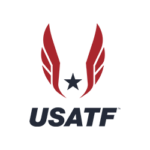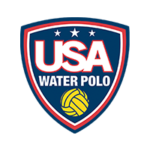The football questionnaire – What you need to know

To some, a football questionnaire may seem like a somewhat inconsequential step in the college football recruiting process. This is because this form, which is generally provided to promising recruits who are on a coaching staff’s radar, consists of basic information about a football recruit and may not appear important. However, that’s far from the case.
Although these forms will not be the deciding factor as far as whether a scholarship will be offered, they can rule someone out of the running early in the process. That’s because not filling one out not only makes it more difficult for a coach to track of a player, but it also indicates a lack of interest from that player. That latter point is especially true if a member of the coaching staff specifically asked a player to fill out this form, but that request was ignored. Conversely, filling one out can nudge a recruiter to recruit a player who they had been hesitant about.
You should fill out a college football questionnaire for any schools that are on your own radar. This is especially true early in the recruiting process. Generally, you don’t want to rule out many schools at this point as you cannot be sure of exactly what’s ahead of you in the recruiting process. Maybe your sights are set on playing in the SEC, but it turns out that D3 provides a better overall fit for you. Perhaps you were looking at one or more local D2 institutions, but your skills improved considerably your senior year, and Big Ten and Pac-12 schools are now looking for your questionnaires.
Note that it’s also important to fill out a football recruiting questionnaire as thoroughly as possible. Although whether you fill one out or not is the most important factor, how you fill it out plays a role as well in shaping a recruiter’s view of what type of personality you have and what skills you’d bring.
Football questionnaire: Expected information
What type of information is asked for in college football questionnaires? Although, in many cases, there is some variety from questionnaire to questionnaire, they do have more in common than not. Here are some examples of information that you’d commonly be asked to provide.
Personal information:
- Mailing Address
- Phone Numbers
- Email Addresses
- Graduation Year
- Social Media Profiles
Note that you need to ensure that your Facebook, Twitter and Instagram accounts are kept clean. For example, don’t have any pictures showing any illegal, unethical or disrespectful activity, and be careful with what you say. Have the mindset that a college coach will read everything that you post and look at every image that you upload.
Academic information:
- GPA
- Class Rank
- Academic Awards
- SAT and/or ACT Scores
- Transcript
- College Majors That You’re Considering
You may be asked to list AP classes and if you’ve taken calculus or physics courses. In many cases, staff members would like to know if you’d allow their university to request your transcript and test scores. Of course, the answer to that should always be yes. Additionally, if you’ve signed up for the NCAA Eligibility Center, formerly known as the NCAA Clearinghouse, you’ll likely be asked to provide your NCAA ID number.
Athletic Information:
- Positions Played
- Preferred Position
- Height
- Weight
- Jersey Number
- 40-Yard Time
- 100-Meter Time
- Bench Press Weight
- Bench Squat Weight
- Other Sports Played
High School Head Coach’s Information:
- Name
- Phone Number(s)
Medical Information:
- Injuries
- Surgeries
Parents’ Information:
- Names
- Email Addresses
- Alma Maters
The college football questionnaire: General advice
Much of the information that you provide on a questionnaire is basic. Examples include your name and address. However, you do want to put effort into the areas that call for that. Research the university and the program so that you can provide a detailed but also concise answer to a question that asks why you’re considering them. Doing this research will also help you have a clearer image of which places might best fit you.
If you’re provided with an option to fill out a questionnaire by hand, take it. Although many forms are only available online, some will be sent by mail. Filling it out by hand and mailing it back may help you stand out and show that you’re particularly interested in that program.
For forms that are available and editable online, ensure that you keep yours up to date. You should be filling these out your freshman year, so a lot will have changed by the time signing day nears. Has your GPA changed? Are you earning all-state honors now? Can you press more now than you did a year ago?
Also play close attention to any coaching changes at schools that you’re considering. A new staff may not have access to a previously filled out form, whether accidentally or intentionally. As a result, reach out to the new coaching staff, reconfirm your interest and ask if you should fill out another form.
Are college football questionnaires identical?
In many cases, college football questionnaires are nearly identical. For example, the Harvard football questionnaire and the Yale football questionnaire have similar formats. The same can also be said for the ones provided by Columbia University football and Davidson football.
Of course, research these schools as well before filling out their questionnaires. Yale football in particular has a useful website that’s dedicated to recruits.
The service providers that football programs use to compile recruiting questionnaires include ARM Software, JumpForward and Recruit Spot.
Conversely, some forms ask questions that are not seen as often. One example is Notre Dame’s. Of course, it asks for much of the basic information that is common for a football questionnaire. However, it also includes several questions that give insight into who you are. These include:
- Favorite Celebrity
- Where Would You Like to Visit/Vacation?
- What’s the Last Movie You Saw?
- What’s the Last Song You Downloaded?
- Favorite Food
- If You Couldn’t Play Football What Would You Do?
Football recruiting questionnaires: State school information
You should also consider how different the process for filling out questionnaires can be from school to school. Here are a few state schools that go about this process quite differently from each other.
Wisconsin provides a straightforward online questionnaire. The information that’s asked for is common amongst questionnaires although one request stands out some and allows you to provide some of your personality. It asks who the “most influential people in your life” are.
LSU does not offer an option for filling out its form online. It asks all interested student-athletes to download, print, fill out and mail a copy of the LSU football questionnaire. The form itself asks the common questions as well as wanting to know about any connections with LSU that you have and just how interested you are in LSU: “yes, very much,” “yes” or “might be.”
Oregon takes it a step further and requires prospective players to send game film prior to being sent an Oregon football questionnaire. You may either email YouTube or Hudl links to the program or mail tapes or DVDs to its office.
Nebraska does not provide any information on its questionnaire on its website, so it’s up to you to contact a member of the coaching staff to inquire about how to access a Nebraska football questionnaire. Other schools are similar. For example, there is also no Michigan football questionnaire on Michigan’s recruiting web page.
The football recruiting questionnaire: Dealing with different divisions
You should strongly consider filling out a football questionnaire for schools in different divisions. You don’t want to rule out a division, especially early in your recruiting process. Perhaps you’ll receive interest from D1 schools despite not believing that you would. Maybe you’ve decided that you want to have more of an academic-athletic balance than exists at that D1 level and want to play D3 football instead. As a result, you’ll most likely want to fill out Division 1 college football questionnaires, Division 2 football questionnaires and Division 3 football questionnaires.
Regardless, make sure to take into account recruiting guidelines for each of the football divisions and for your positions to give yourself an idea of where your skills rank as compared to those you’re competing with for roster spots.
What comes after filling out a college football questionnaire?
Although filling out a recruiting questionnaire is a pivotal early step in the recruiting process, it’s generally just the start. You’ll want to continue researching schools that interest you and work on narrowing your list as time passes and the time to make a decision approaches. You’ll need to continue to improve on the football field and in the classroom to ensure that you’re ready for both of those aspects of college. You should consider taking part in events such as football camps and showcases. Send a highlight tape of your play to schools if doing so wasn’t required prior to filling out a recruitment questionnaire.
You should also know the difference between a college football prospect, a college football recruit and a college football commit. A prospect is simply someone who is eligible to play college football in the future. A recruit has been recruited by at least one college team. In other words, a member of that coaching staff has communicated with the player about potentially playing there. A commit is someone who has come to an agreement with a coaching staff to play there. This can be binding such as occurs with the signing of a National Letter of Intent or be verbal and not binding.
For more information on the football recruiting process, head to these links:
- Football Camps
- Football College
- Football University
- Football Recruiting Guide
- How Football Recruiting Works
- College Football Recruiting: What to Know
- College Football Signing Day
- Recruiting News
- Recruiting Rankings
NCSA College Recruiting has been providing assistance to high school student-athletes looking to take the next step in a wide variety of sports since it was founded in 2000. NCSA staff members know how important this decision is and how much effort needs to go into being proactive throughout this process. They’re also well versed in every aspect of it and ensure that student-athletes who take advantage of what they have to offer are informed about those.
One of the ways that NCSA does this is by helping student-athletes create plans. The recruiting process should start during your freshman year of high school, and much needs to be done over the following four years. Although it may seem overwhelming, NCSA staff helps simplify the process so that you can ultimately find the best overall fit possible. Factors such as your football-specific ambitions, your academic ambitions and what types of cultures you want to be part of are taken into account.
Over the past couple of decades, 300,000 NCSA clients have reported that they were able to successfully earn a spot on a college roster. Also, more than 50,000 coaches are a part of the network; this provides multiple benefits. Student-athletes gain easier access to them, and the coaches receive assistance in filling out their rosters with what are the best fits from their perspective as well.
If you’d like to take advantage of what NCSA has to offer you, fill out your free profile today. The only requirement that you must meet to do so is to be 13 years of age or older. Think of this like your online athletic resume.
















